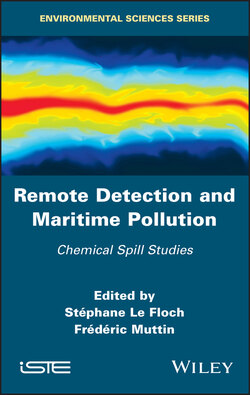Читать книгу Remote Detection and Maritime Pollution - Группа авторов - Страница 12
1
POLLUPROOF Project 1.1. Introduction
ОглавлениеIn cases of maritime pollution by HNS (Hazardous and Noxious Substances), specific methods of identification and characterization are needed. The project POLLUPROOF (which started in January 2014 and ended in mid-2017) aims to test and validate the use of optical sensing methods, including hyperspectral and radar sensors, in order to detect, locate and classify six HNS. In this chapter, the experimental approach followed during the project is detailed: the calibration of optical sensors in mesoscale experiments and the validation of optical and radar sensors in a realistic experiment at sea. The promising results obtained are specifically explained in the other chapters.
Maritime shipping activities are responsible for about 20% of the pollution at sea. Pollutants discharged accidentally or deliberately can endanger the biodiversity and eco-balance of our oceans. Exhaust emissions and cargo mishaps associated with an increase in vessel traffic are sources of pollution that affect both the marine environment (acidification, contamination of flora and fauna) and land (acid rain). This issue has become a priority at the national (Grenelle de la Mer) and regional (European – directives 2005/35 and 2005/33) levels, as demonstrated by the implementation of several international conventions (e.g. OPRC-HNS Protocol [OPR 00], MARPOL (completed in 1978) [MAR 73]). Obviously, the removal or drastic reduction of pollution resulting from maritime activities is a desirable objective. The magnitude of the problem is highlighted by the quantity of goods transported by sea: of an estimated 8,000 million tonnes (Mt) of chemicals transported worldwide, 350 Mt are transported via European waterways. It is estimated that there are more than 100 incidents per year involving the illegal discharge of noxious liquid substances in these waters. For over 25 years, French Customs (DGDDI) have deployed aircraft equipped with remote sensing instruments (radar and scanner IR/UV), in order to successfully prosecute ships involved in oil spill incidents. The effectiveness of this policy has been demonstrated through a significant reduction in oil pollution in the waters under French jurisdiction (during the period between 2006 and 2012, the number of ships caught polluting was reduced by threefold).
This chapter presents the POLLUPROOF project through its objectives and the experimental approach used to achieve them. Results from the experimental parts are beyond the scope of this chapter and will be part of other chapters.
